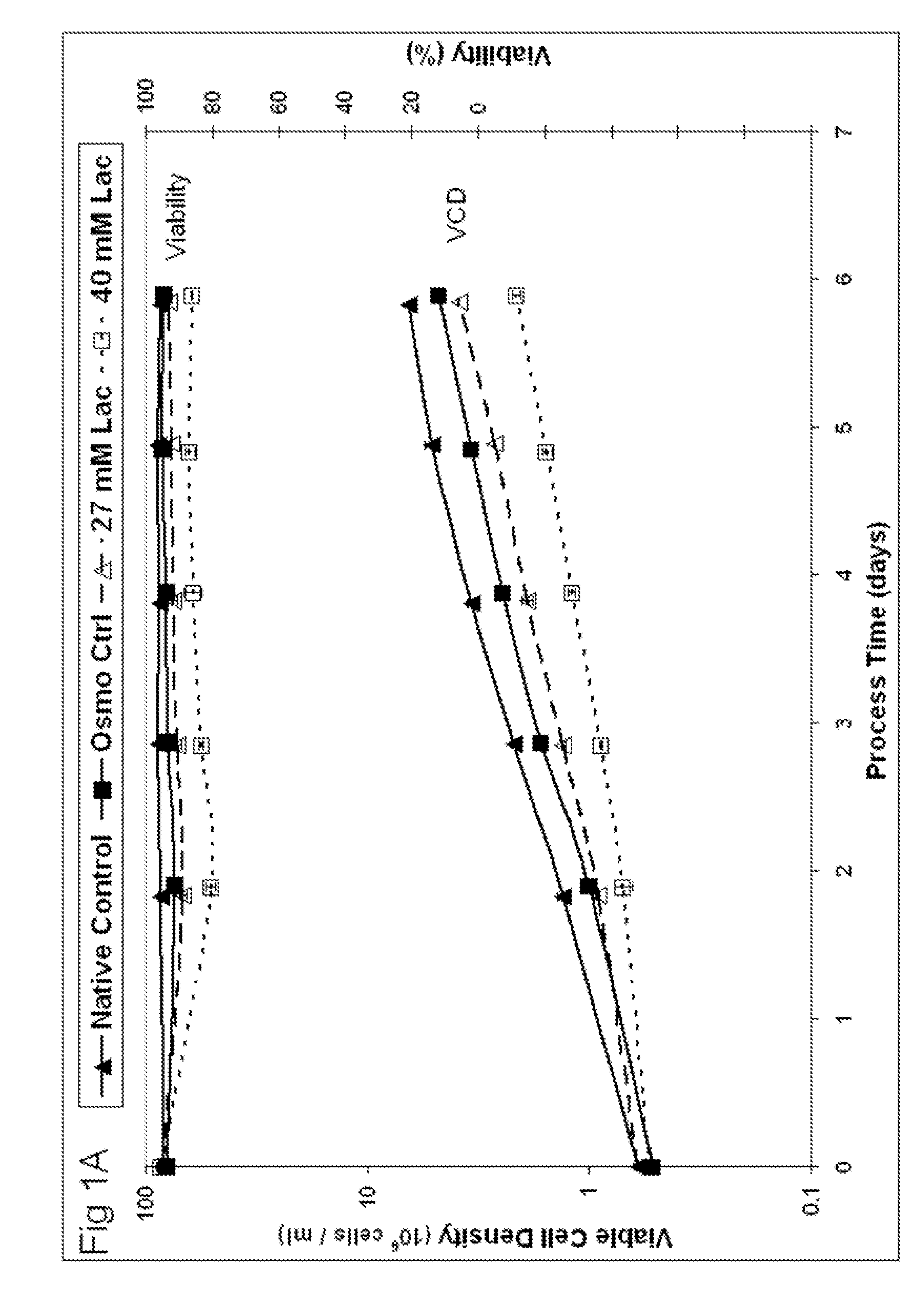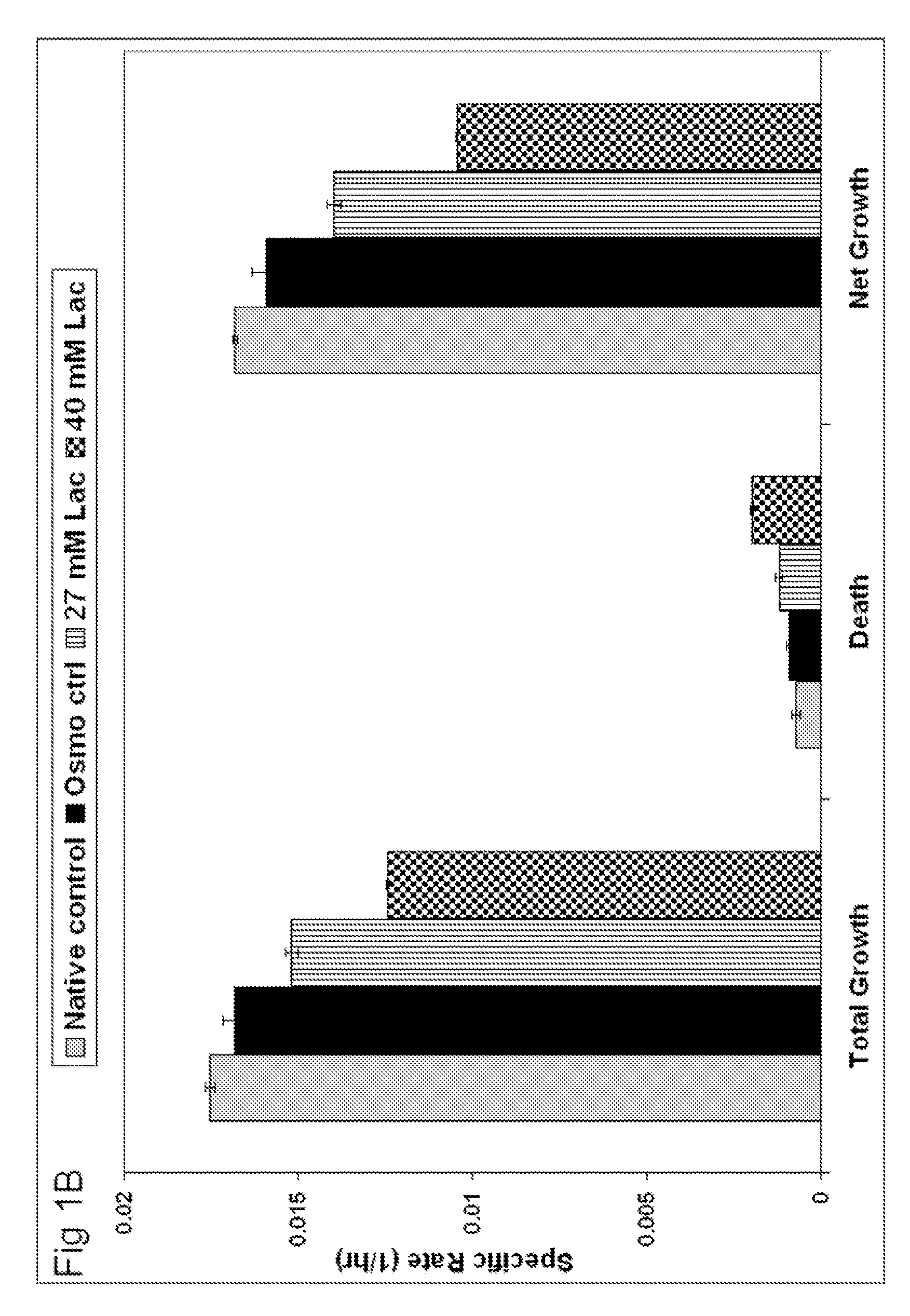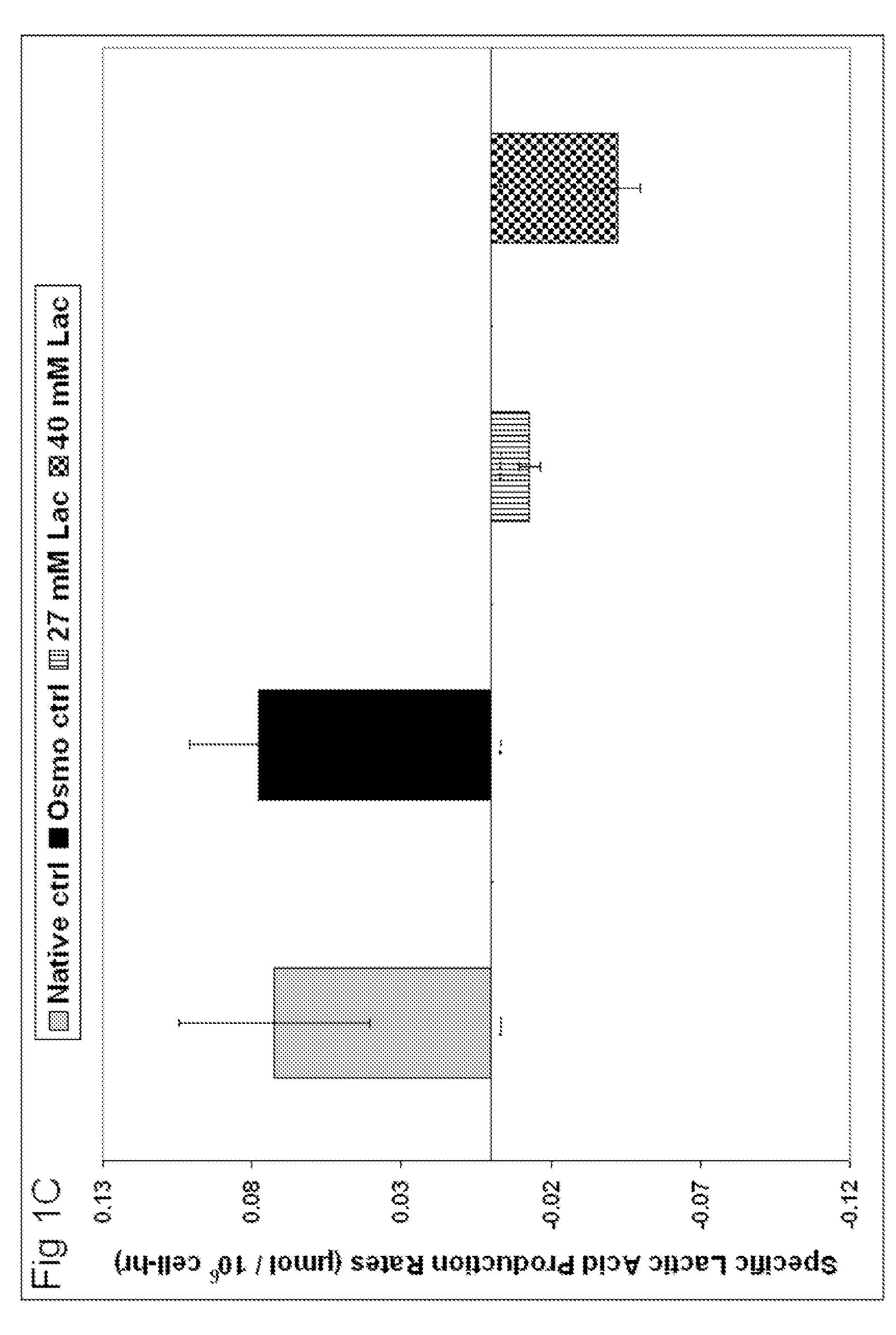Novel strategy to reduce lactic acid production and control ph in animal cell culture
a technology cell culture, applied in the field of new strategy to reduce lactic acid production and control ph in animal cell culture, can solve the problems of low ph levels, insufficient metabolization, and insufficient control of lactic acid production at lower ph, so as to reduce the specific lactic acid production rate of the cell, the effect of reducing the production ra
- Summary
- Abstract
- Description
- Claims
- Application Information
AI Technical Summary
Benefits of technology
Problems solved by technology
Method used
Image
Examples
example 1
Selecting a Sufficient Concentration of Lactate
[0089]In order to test a novel strategy of minimizing lactic acid production by viewing lactic acid metabolism as a mass action balance between pyruvate and lactate levels, cells were cultured in the presence of exogenous lactate. Although the equilibrium balance highly favors lactic acid production (ΔG°=−25.1 kJ / mol) this flux can hypothetically be reversed by high levels of lactate as explained by the following reaction (Lehninger, 2000, Principles of Biochemistry. New York: Worth Publishers):
Pyruvatetolactateinterconversionanditsstandardfreeenergychange.Pyruvate+NADH+H+⇆Lactate-+NAD+ΔG=RTlnKeq+RTln([LAC-]·[NAD+][PYR]·[NADH])WhereRTlnKeq=ΔG°=-25.1kJ / molReaction1
[0090]Lactate concentrations that increase the stoichiometric ratio above the equilibrium constant, Keq, should generate a positive ΔG and change the actual free energy to favor pyruvate production. This phenomenon follows the laws of mass action, and thus dictates that the bal...
example 2
Adapting Cells to Sufficient Lactate Concentration
[0093]To investigate whether cell growth can recover in lactate supplemented media, an attempt to adapt the cells was explored. The Native Control cells were thawed and grown in conditions described in Table 1. Basal medium was the commercially available serum-free, chemically-defined OptiCHO medium supplemented with 8 mM glutamine (Invitrogen, Carlsbad, Calif.). Adaptation to high lactate levels occurred by continuously passaging the cells in starting lactate levels ranging between 25 to 44 mM as measured by a Bioprofile 400. Ninety sequential passages over 9 months were performed in total to monitor stability and run parallel experiments. For the media formulation, the final lactate concentration chosen was 35 mM. The cells successfully adapted to this level of lactate supplementation will hereafter be referred to as “Lactate Adapted” cells.
[0094]A second control cell line was adapted in a similar fashion to basal medium supplement...
example 3
Metabolic Efficiency of Cells in Sufficient Lactate
[0098]In view of the mass action model, a lactate supplementation strategy may reduce process variability with respect to glucose metabolism. To determine if the sufficient lactate concentration identified in Example 1 altered the glucose metabolism of the cells, both lactate production and glucose consumption were measured.
[0099]Lactate Adapted cells were continuously passaged in medium containing 0 to 40 mM lactate. As illustrated in FIG. 3, specific lactic acid production rates decreased with increasing initial lactate concentration. Inoculating cultures between 35 to 40 mM lactate substantially reduced lactic acid production with zero net flux predicted to be slightly above 40 mM.
[0100]A wide distribution of lactic acid production for cultures batched without lactate can be observed in FIG. 3. As lactate additions increased, the distribution became tighter, minimizing process variability.
[0101]Lower lactic acid production (qLac)...
PUM
| Property | Measurement | Unit |
|---|---|---|
| concentration | aaaaa | aaaaa |
| concentration | aaaaa | aaaaa |
| concentration | aaaaa | aaaaa |
Abstract
Description
Claims
Application Information
 Login to View More
Login to View More - R&D
- Intellectual Property
- Life Sciences
- Materials
- Tech Scout
- Unparalleled Data Quality
- Higher Quality Content
- 60% Fewer Hallucinations
Browse by: Latest US Patents, China's latest patents, Technical Efficacy Thesaurus, Application Domain, Technology Topic, Popular Technical Reports.
© 2025 PatSnap. All rights reserved.Legal|Privacy policy|Modern Slavery Act Transparency Statement|Sitemap|About US| Contact US: help@patsnap.com



